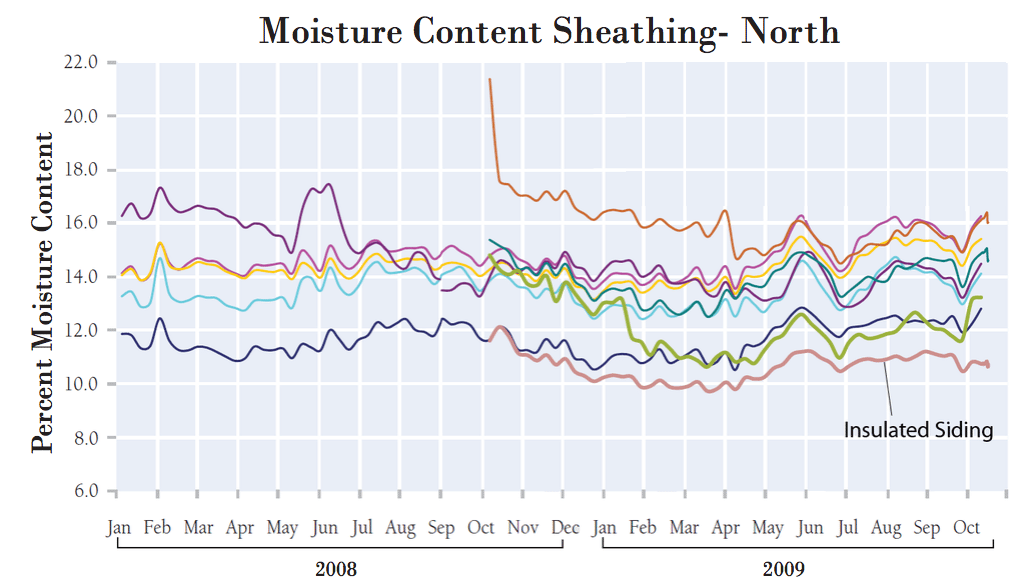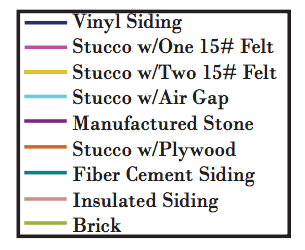Home Innovations Research Labs Report
Insulated Vinyl Siding proved to produce driest wall assembly of nine systems tested
Craig Drumheller, Senior Energy Engineer with Home Innovations Research Labs (HIRL), completed a one year field study titled Effect of Cladding Systems on Moisture Performance of Wood-Framed Walls in a Mixed-Humid Climate. In this study, Drumheller compared insulated siding with eight other wall assemblies, including traditional vinyl and fiber cement sidings, and concluded that:
"Insulated Siding provides both thermal and hygrothermal benefits in light framed wall construction. The thermal resistance of insulated siding provides a double benefit: reduced heat flow in the wall assembly, thereby saving energy, and a higher wall cavity temperature, resulting in increased drying capacity.”
“Insulated vinyl siding demonstrated the best moisture performance in the study, with the overall driest wall assembly regardless of indoor moisture conditions.”
-Craig Drumheller
The field investigation of nine different wood-framed wall assemblies was conducted to determine the moisture performance of various exterior wall constructions with elevated wintertime humidity in two seasonal phases (40-45%RH for typical winter, and 25-30RH in the summer) levels and seasonal moisture injections between the cladding and sheathing over a thirteen-month period. The report compares the nine wall pairs’ performance to each other and the two phases.
Stud bay temperatures and humidity were monitored, as were moisture contents in the exterior sheathing and the studs. Insulated vinyl siding and brick came out as the two driest assemblies with the insulated vinyl siding being the least affected by orientation. Stucco clad walls represented the wettest wintertime sheathings. Most of the wall sections were greatly influenced by the indoor relative humidity; the only wall system that was somewhat immune to the indoor relative humidity was the insulated vinyl siding.
“We engineered our Fullback siding insulation to do both--reduce air and water infiltration from the outside, and allow for an effective release of water vapor and excess humidity from the inside,” said Pat Culpepper, president. “The HIRL study verifies Fullback’s superior moisture performance, which is a key consideration for building professionals and homeowners.”
Source: Drumheller, S. Craig, and Charles G. Carll. Effect of Cladding Systems on Moisture Performance of Wood-Framed Walls in a Mixed-Humid Climate. National Association of Home Builders (NAHB) Research Center.



